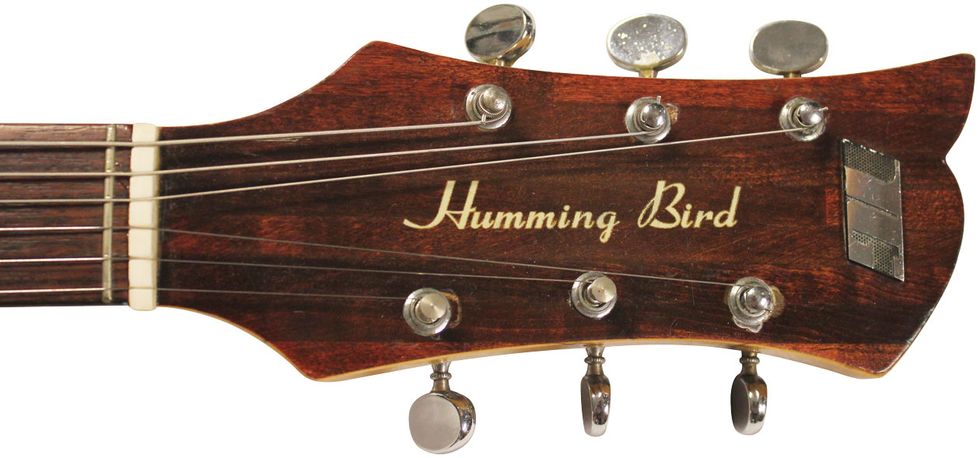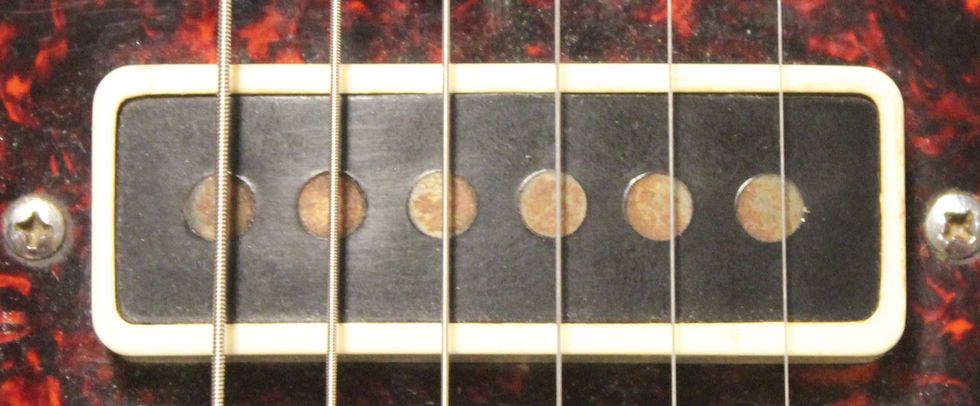Do any of you have memories of high school classes like wood shop, mechanical drawing, or electronics? I have some clear recollections of those days, whereas my other school experiences have become rather foggy. It was probably because I really liked working with my hands. I’m pleased to know that in my daughter’s school, the kids are still learning about woodworking, plastics, and even 3-D printing, which is awesome.
After looking at my daughter’s latest plastics project, it got me thinking about my days in wood shop, where I made this really cool butcher-block cutting board that my mom actually used for many years. I remember selecting different types of wood based on color, gluing all the strips together, and shaving off the ends. It was so simple, yet quite the feat of creation for an ape like me.
As with all things in my brain, it led me to make a connection to a “butcher-block guitar” with a built-in fuzz circuit. Yes, once upon a time in the late ’60s, there was a guitar that could carve out some seriously gnarly sounds. Born out of the legendary Tokai factory in Hamamatsu, Japan, this 6-string was built well beyond my wood shop project and was actually the flagship for Tokai’s first foray into electric-guitar production.
Released in 1967, this aggressively styled guitar was dubbed the Humming Bird 230S. Its butcher-block-type body was created by using alternating dark woods, and then stained to show the grain and beauty of the alignment. All of these 230S guitars were finished in a dark, natural hue, so you won’t find any color variations out there in vintage land.
Photo 2
The offset body reminds me of a flipped Mosrite, which isn’t surprising since the designer—Masahiro Matsui—was inspired by the Mosrite Ventures guitar of the same era. It’s also no surprise that all of the original Tokai electric guitars combined Mosrite aesthetics with Japanese flair. Check out the German carve and the sharp points (Photos 1 and 2) that came to exemplify the earliest Tokai offerings.
What really made the 230S different from the other Humming Birds in the line was the fuzz circuit hidden under the pickguard. There is a separate tone circuit on the upper bout, à la Fender’s Jazzmaster, but rather than a darker tone, it provides a truly interesting fuzz that’s reminiscent of an Electro-Harmonix LPB—with a little more edge and rawness. It’s hard to describe because there isn’t a modern equivalent, but the sound of the fuzz reminds me of some old bands from Japan like the Outcast or the Jaguars. The fuzz totally captures the era so authentically, and the circuit stacks really well with other gain pedals for some rather in-your-face tones.
Photo 3
The pickups in the 230S (Photo 3) are unique, because they were only made for a very short time and also appeared briefly on a few no-name guitars from the era. The pickups read out in the 6k to 7k range, have excellent clarity, and can push a small tube amp nicely. These pickups remind me of clear P-90s—suited for all sorts of music, but particularly awesome at ’60s- and ’70s-rock riffing.
Tokai is still making guitars today and recently reissued some of the old Humming Birds, but this first venture into electrics only lasted a little more than a year. I still see this model pop up every now and again, which is nice since they were only released in Japan in small numbers. Yes, these butcher-block guitars are something of an anomaly, but if you can find one, carve away!
See and hear this late-’60s Mosrite-like fuzz machine demoed by Mike Dugan.















![Rig Rundown: Russian Circles’ Mike Sullivan [2025]](https://www.premierguitar.com/media-library/youtube.jpg?id=62303631&width=1245&height=700&quality=70&coordinates=0%2C0%2C0%2C0)













